Comments/Ratings for a Single Item
1. Magus. When there is a Wizard, it's usually with a move of FC. Unlike most other symmetrical-move pieces, though, it doesn't have a rotated counterpart -- until now. The Magus' WZ move matches the Wizard's, rotated 45 degrees.
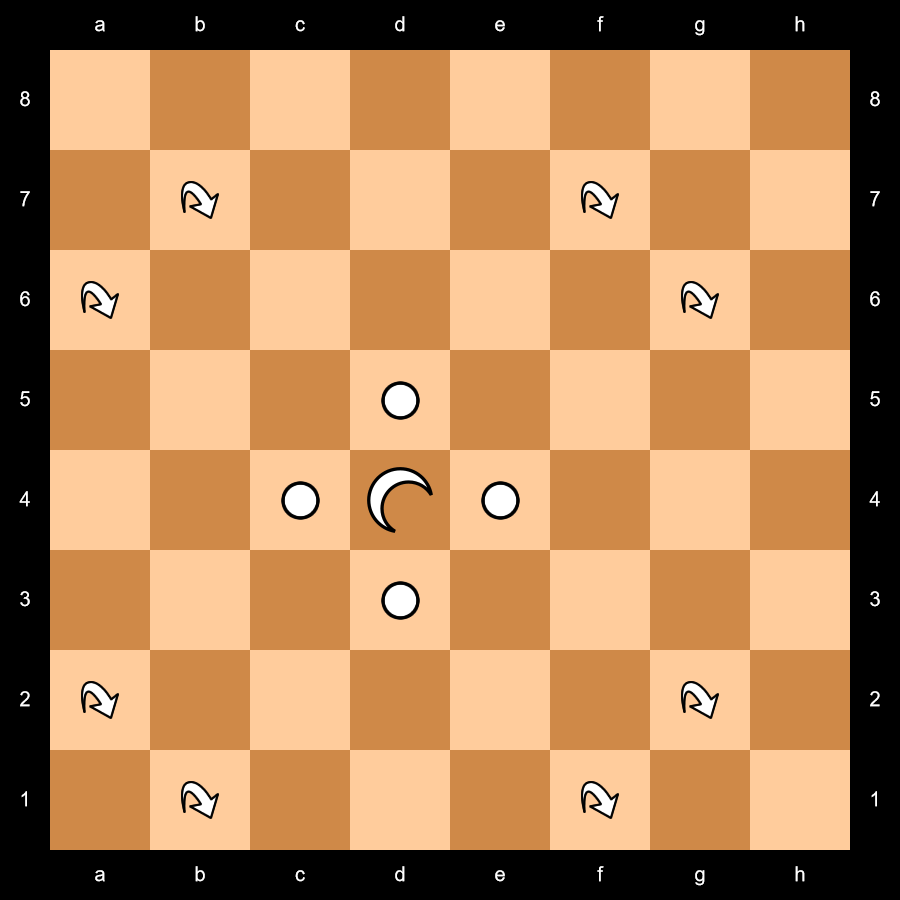
As for the word magus, it's not only a common synonym of "wizard," but also refers to a Zoroastrian priest, which helps the name stay in line with the clergical theme of diagonal movers.
For the appearance of the piece, I found several images showing ancient and modern looks for the Zoroastrian magus, and combined them into something unique (on the chessboard, anyway).

I suggest you have a look to my latest book "More chess and more than chess" where I have a full section presenting several fairy pieces. Among them the Sorcerer, moving WZ, created by John Davis for his Grand Tamerlane Chess (presented on the CVP).
Beware of not re-inventing everything :=)
I may just find that book. I'd already been contemplating it; this is just a little more impetus. :) (My main barrier is the price; I'm somewhat low-income.)
I knew I'd seen a Sorcerer somewhere, but couldn't find it and thought it had something more complex than WZ.
That said, a few others that I plan to post are deliberately "my version" of something that exists, and I think that the Magus probably has a fresh theme cf. Sorcerer.
Yes, you can choose the name you like for your games. Of course. I just wanted you to know the piece exists already. There are other sources compiling names of pieces on the web, on WP, by Jelliss, by the British Chess Federation, etc., in addition to our piececlopedia.
Quite so. Sometimes, though, it's dependent on the visuals, and sometimes it's whether a physical piece exists either in manufacture or as a 3D model for printing. And sometimes it's in how the name is applied.
(Of course, I humbly concede the originality of the Magus, in terms of its move and relationship to the Wizard.)
2. Gerbil. What do you get when you combine a Giraffe (1,4) with an Alfil (2,2)? You get a Gerbil (AFX).
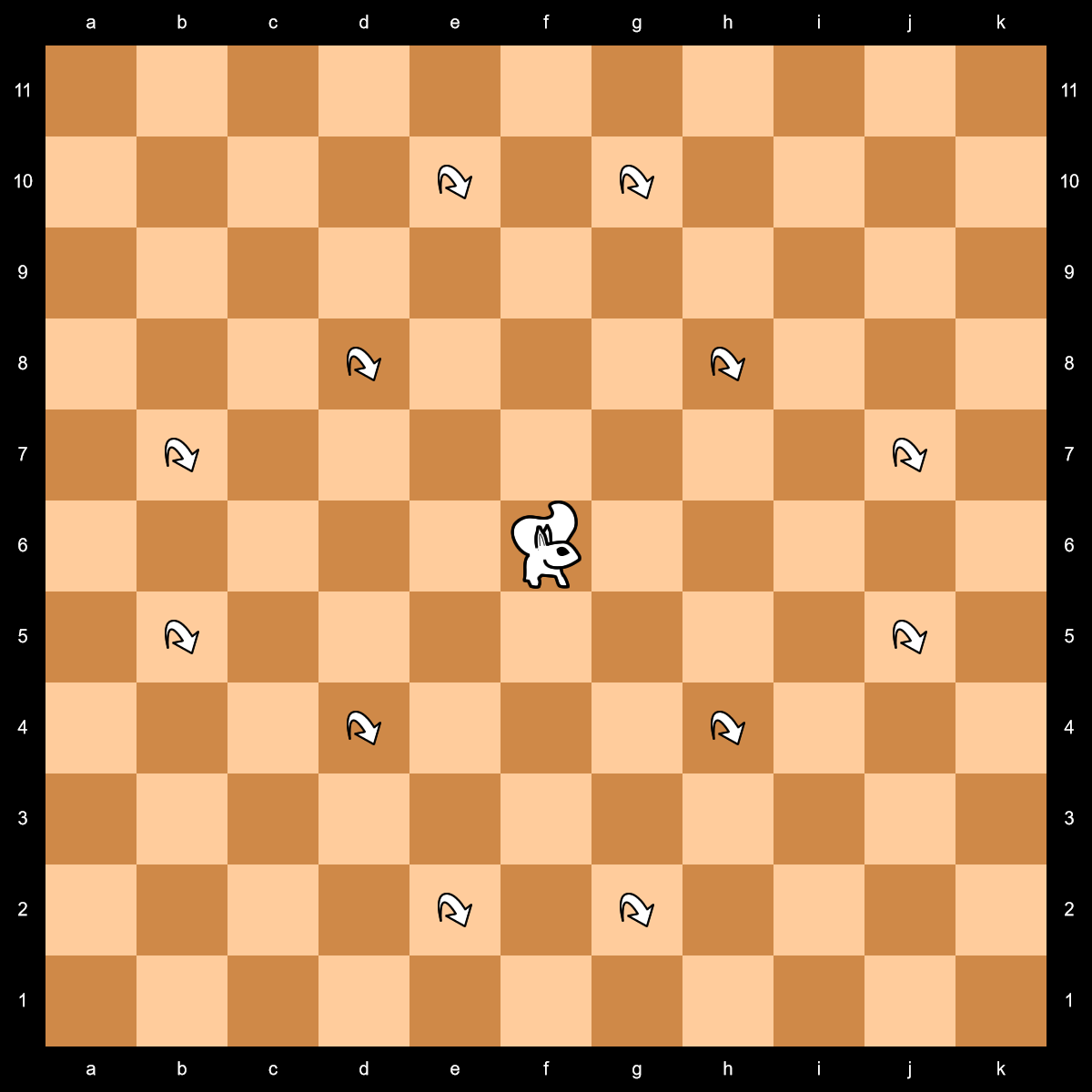
This was inspired by a simple fit of silliness while reading through some of Charles Gilman's "Man and Beast" articles. I doubt that there are any other (1,4)(2,2) leapers around, but even if there are, the name was hard to pass up. (And while Mr. Gilman does include a Gerbil in his lengthy list, it's for cubic 3D games, so there shouldn't be much if any conflict.)

Personally, to make decent use of the (1,4) leaps, I wouldn't use this piece on any board smaller than 10x10.
 Bn Em wrote on Wed, Jul 19, 2023 05:47 PM UTC in reply to Bob Greenwade from 02:09 PM:
Bn Em wrote on Wed, Jul 19, 2023 05:47 PM UTC in reply to Bob Greenwade from 02:09 PM:Fwiw, if you're already referring to M&B, it might as well be noted that the AFX is already named there as a Gingaroo (extrapolated from Kangaroo as per Diverse Directions), though ofc that's a nonsense word so tastes may differ as to whether it's suitable.
I'd also be lightly surprised if it's been used anywhere before
I'm under the feeling that the antilope+dabbabah should have a place in this discussion! The DNY.
Good thought, Aurelian! I'm not sure what I'd call it, though, in keeping with the Gerbil's portmanteau origin (and the need for it to describe something ridiculous).
Bn Em's quite right, of course; nonsense words are mainly useless, as they give no visuals to base the piece's appearance on.
 Bn Em wrote on Wed, Jul 19, 2023 08:25 PM UTC in reply to Bob Greenwade from 06:30 PM:
Bn Em wrote on Wed, Jul 19, 2023 08:25 PM UTC in reply to Bob Greenwade from 06:30 PM:I'm not sure what I'd call it
Per Diverse Directions, Narpenter?
Bn Em's quite right, of course; nonsense words are mainly useless, as they give no visuals to base the piece's appearance on.
The objection to nonsense words isn't really mỹ own; after all, (a) pieces with nonsense names are often a bit obscure anyway and (b) several of the more established pieces have nonsense names — not only our alfil and dabbaba but even orthochess pieces (our Rook — unrelated to the bird although the source of some Gilmanese extrapolations — as well as e.g. the Spanish Alfil or (former) Italian Rocco (other modern senses deriving from this one) are all meaningless words outwith Chess) and few seem to mind
Of course these have etymologies (as well, at least in English usage, as synonymous calques) that'll suggest visual representations, but names are not the only possible basis for such: again, the orthodox set often bears precious little resemblance to the standard names, whilst the move is often an equally good suggestor of visuals — see, for example, abstract designs (Bauhaus, f.ex., or H.G.'s Ultima set), or the various extrapolative images in Alfaerie (2‐square leapers with diacritics, Diagonal‐cannon ‘Vao’s, the perfectly evocative non‐animal gryphon and manticore…) and others (the nigh‐ubiquitous knight–slider hybrids)
But, as I said, tastes may (and indeed do) differ ;)
Yes, knowing the etymology of an apparent nonsense word can make it, well, non-nonsense, as is the general case with Alfil, Dababa, and Rook.
And of course there are other routes one can go for the piece's physical appearance. (Some time I'll be posting my version of the Fibnif.)
As for what to call the DNY piece, the starting point would be either "antabah" or "dabalope"; I'm not sure where to take it from there, to make a good visual.
3. Anteater. I did come up with something to go with Aurelian Florea's comment yesterday, to be a DNY to go with the Gerbil's AFX. Mashing together "antelope" with "dababah" gives us "antebabah," and "anteater" is the closest thing I could come to that.

As with the Gerbil, Charles Gilman does have an Anteater in his list, but it's specific to hex boards.
And the piece is done in the same style (and with the same height & base diameter) as the Gerbil.

And, as with the Gerbil, I wouldn't try to use this on a board smaller than 10x10.
5. Pirate. The Pirate is similar to an existing piece, the Hippopotamus, in that it moves like a Knight but never moves except to capture. What's different about the Pirate is that it's neither White nor Black; it belongs to neither side (I think of it as Grey). Either player can move it.
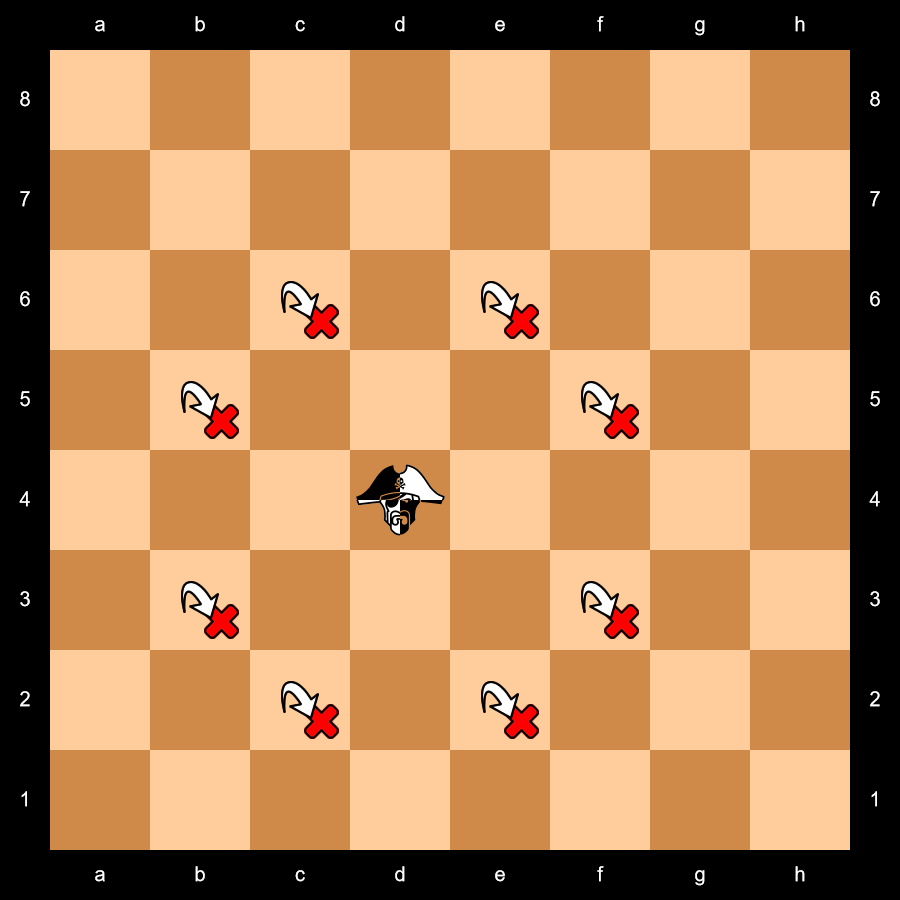
In an initial setup, one or two Pirates would be placed in the middle rows of the board, in symmetrical positions. If the board is large enough, they should be in places where they can reach neither player's Pawns.

6. Ghost. The Ghost leaps one or two spaces orthogonally or diagonally, without capturing. To capture, it slides through an enemy piece in an adjacent square to the empty square on the other side.
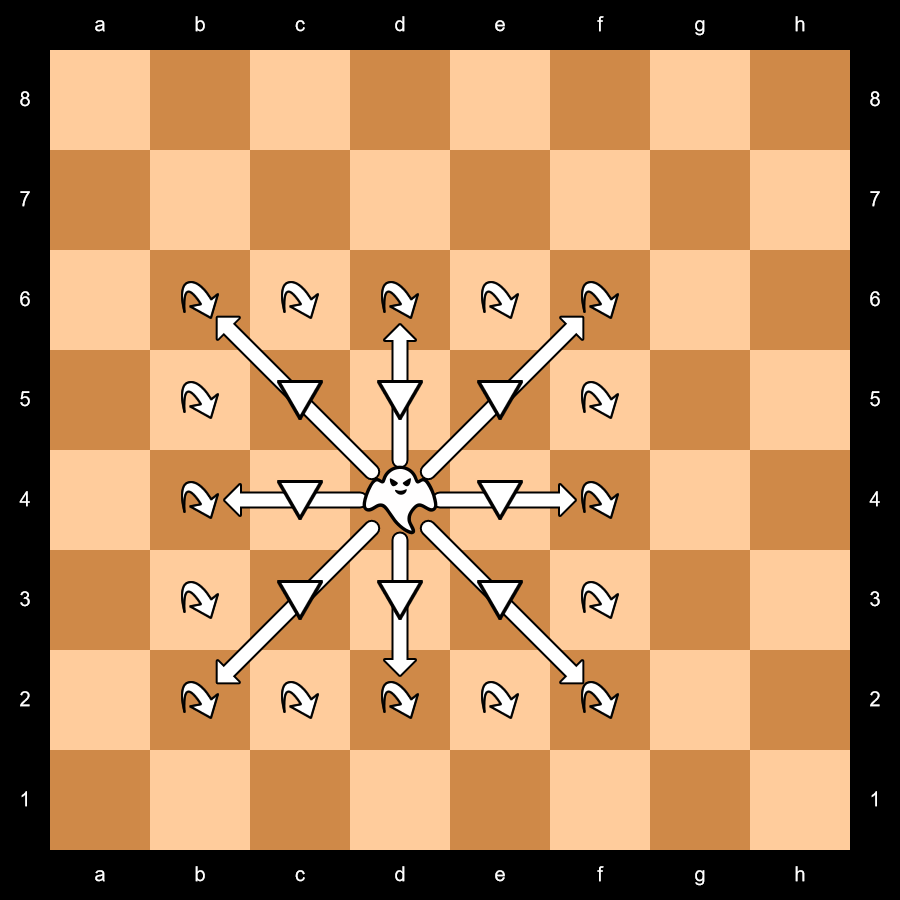
To be honest, I'm actually pretty sure I've seen a piece somewhere that moves the exact same thing (though described differently), but I cannot at this time recall where. I still like this take on it, though, just for the mental image.
I'm also wondering if it would be an improvement to extend its move (though probably not its capture) by one square.
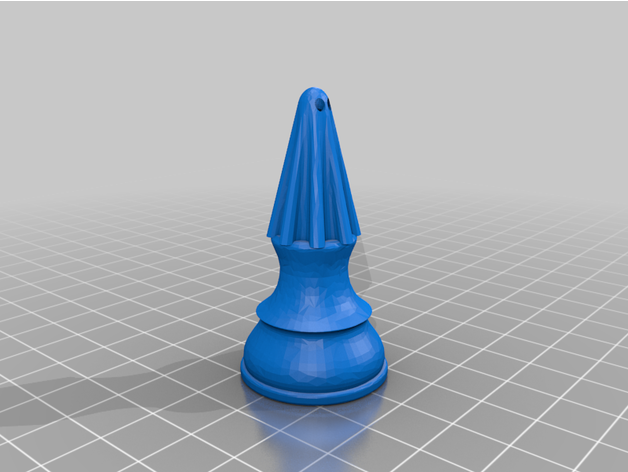
7. Samurai. In his Man & Beasts articles, Charles Gilman proposes calling a (2,6) locust-capture leaper a Katana. And what do you get when you cross a Katana with a Knight? A Samurai, of course.
In part because of the Knight move, and in part because the Katana move represents a sort of "lightning step" attack, I'm assuming that the latter cannot be made unless there's a target to capture. Thus, that makes the Betza (I believe) NcafmC.

This piece is presented somewhat as an experiment, looking for a good way to represent a locust capture using Musketeer's Board Painter. The leap icon (in this case, with a "capture only" red X) shows the destination square, the straight arrow shows the overall movement, and the square where the captured peice would be is shaded black. Prompt feedback on this would be very helpful; I'll be using it to edit one of my unpublished submissions. Tomorrow's planned entry will be an extension of this one, and I'll implement whatever recommended changes seem right.
One nice thing with Board Painter is that I was able (for a change) to find the perfect icon for this piece: the crescent, turned 45° so the opening is straight up, like the crescent symbol on a samurai's helmet. A simpler version of the piece could have just the crescent, though for now the full helmet (with mask) will do.
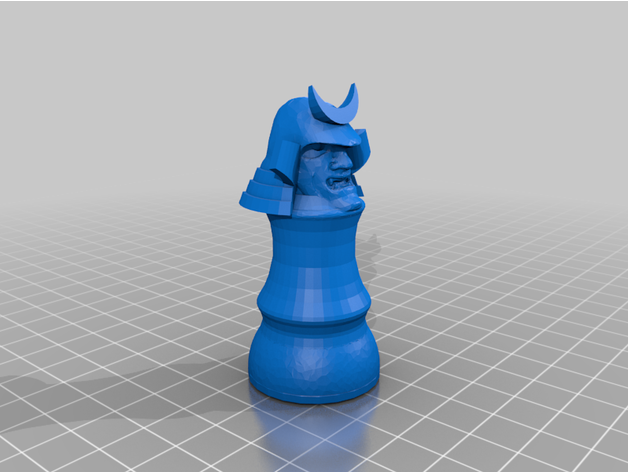
8. Kimono Dragon. That's right -- I said kimono, not Komodo. I've seen that as an actual mistake a few times, but I came across it recently and immediately envisioned a dragon wearing a kimono. I just had to find some way to go with it.
For the figure's move, I wavered between a couple of other things I've done, but settled on the Samurai (yesterday's Piece of the Day) as the starting point for the "kimono" part (NcafmC). For the "dragon" part, using the traditional Dragon (NP) would've added just a Pawn's move, and I wanted something more impressive than that; then I saw that a couple of variant Dragons have Bishop (or Bishop-like) moves, so I decided to go with that, yielding BNcafmC -- basically, an Archbishop/Minister/Paladin/Princess with the Scimitar locust capture added.
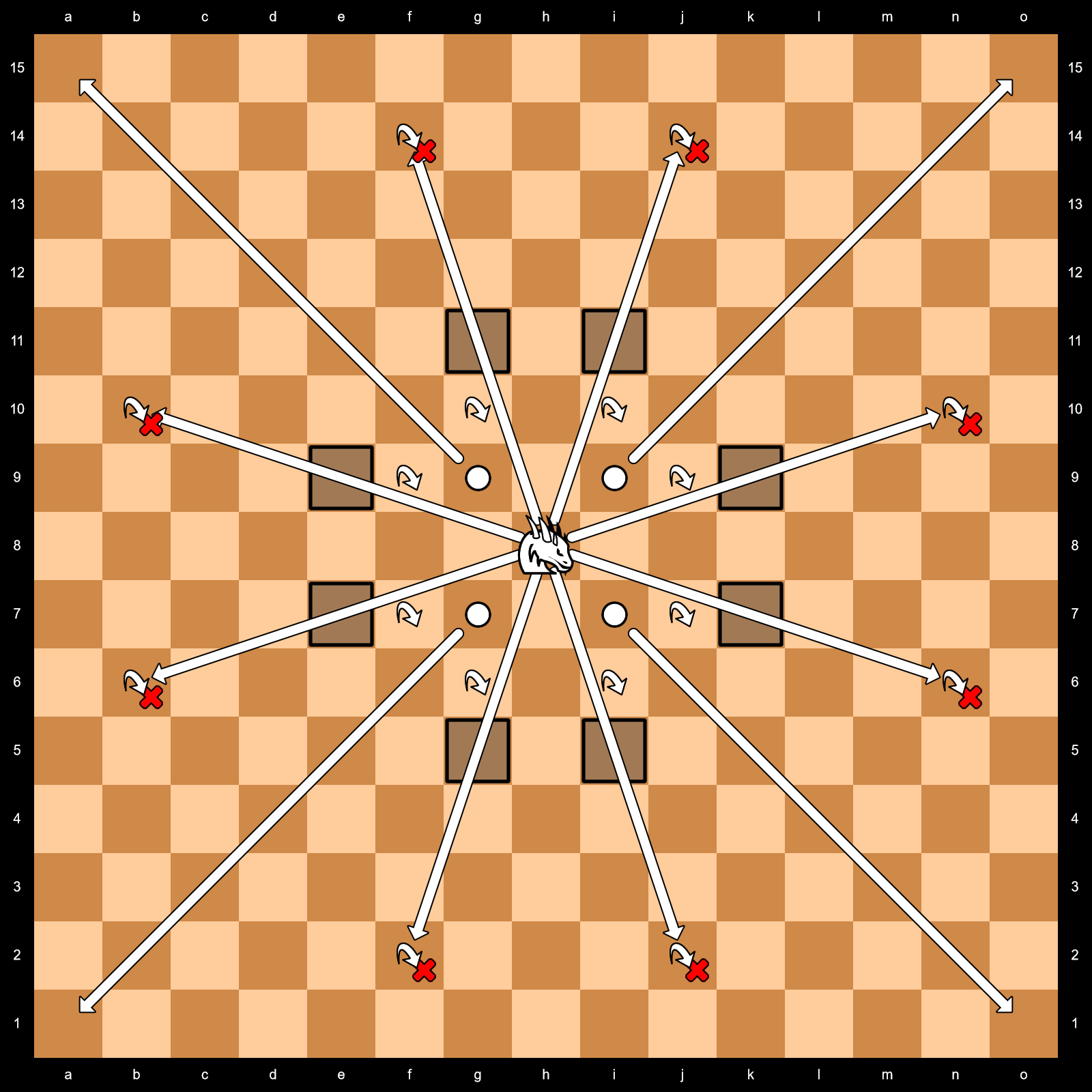
I don't generally go in for full-figure forms with my pieces, but given that the kimono is an important part, I decided to go for it this time. The kimono, dragon's head, and katana were taken from three different sources (and hopefully don't look too incongruous together).

 H. G. Muller wrote on Mon, Jul 24, 2023 03:23 PM UTC in reply to Bob Greenwade from 02:23 PM:
H. G. Muller wrote on Mon, Jul 24, 2023 03:23 PM UTC in reply to Bob Greenwade from 02:23 PM:The head is definitely too small; 50% larger would not hurt. And some of your designs would break immediately...
Yeah, I'll adjust that head. I may need to beef up the katana as well. (I'm pretty sure the picture here won't change; I may or may not post the update.) Thanks for the note!
And I'm aware that many of my piece designs are rather fragile; that's why they're marked as Works in Progress (on Thingiverse). I had to do a bit of extra work on the Ghost, in fact, after I found that it wouldn't even print at all the way it was (I'm not even that sure about it now). I'll have a better idea of things once I can fix my 3D printer.
I'd be surprised if anyone besides me wants to actually use this in a game, though. It's mostly here for the pun (and the second part of testing the locust-capture method).
A (hopefully) better version of the figure, with a larger head.
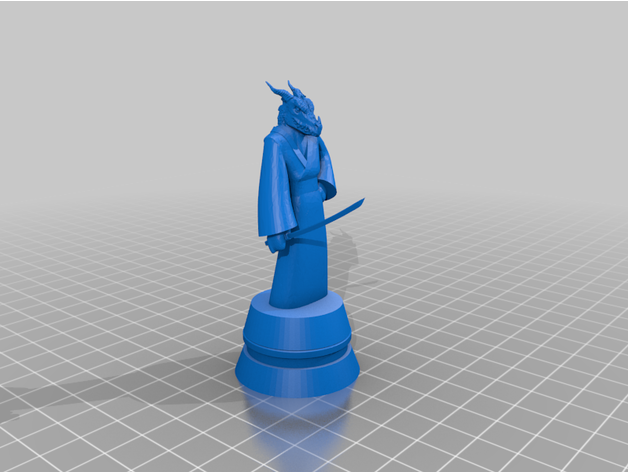
The neck is the real problem here, but I think I've solved most of the issue for now.
9. Nighty Knight. This is quite simple: a Knight that, if the first space it leaps to is empty, can make a second leap in the same direction (N2).
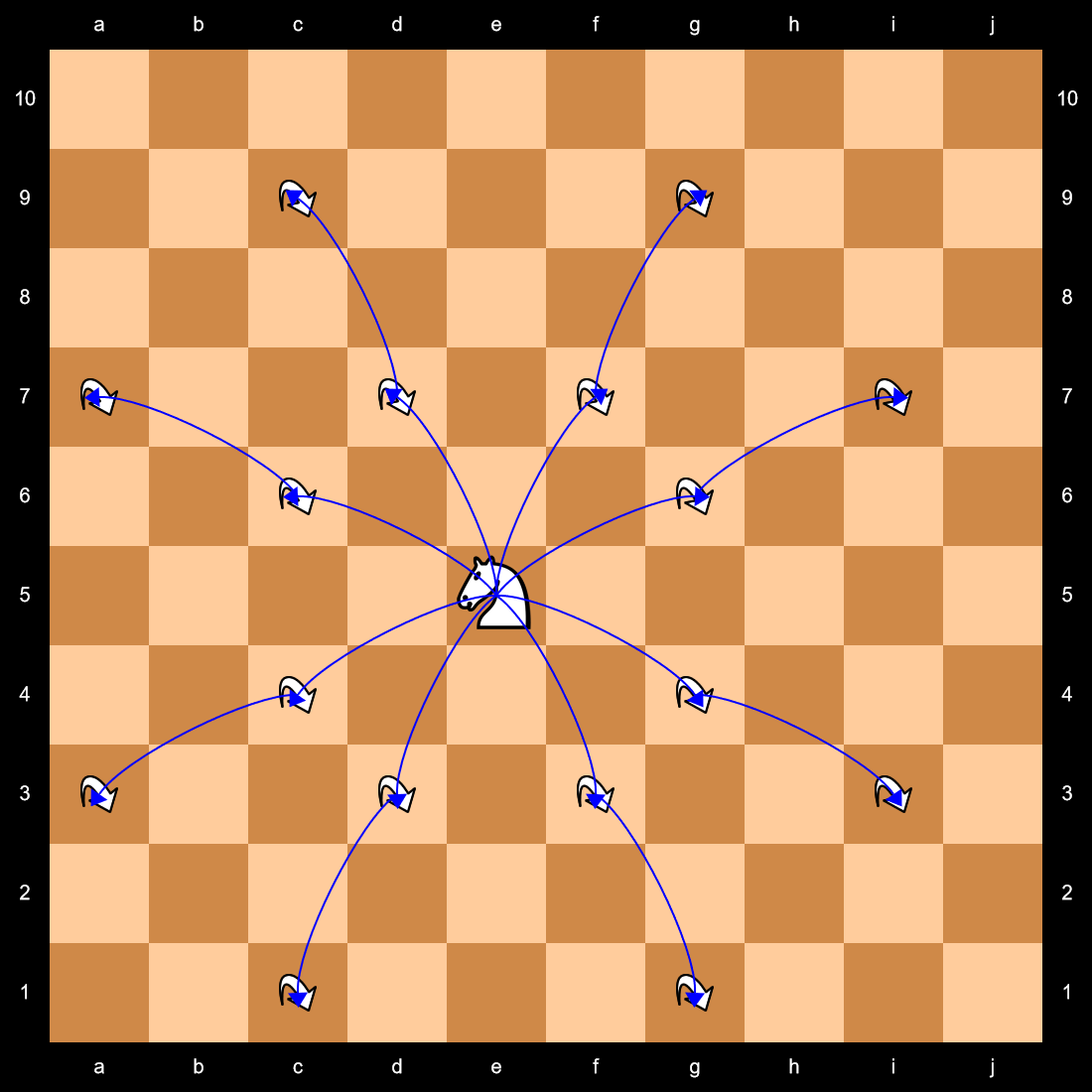
It could be called the Double Knight, Super-Knight, Two-Knight, or any of many other names; I just like Nighty Knight best.

For some reason I think the figure looks kind of creepy, though it may benefit from an update with the heads at a narrower angle (at 22.5º they make a piece with a 30mm base almost 45mm wide).
EDIT: I decided to go ahead and make that update; I'll put the image here after it updates on Thingiverse.
Random trivium: Extending beyond the Root-25 and Root-50 leapers, we can have Root-65 (1,8)(4,7), 85 (2,9)(6,7), 100 (0,10)(4,6), 125 (2,11)(5,10), 130 (3,11)(7,9), and more.
These all have two leaps; the lowest Root leaper we can have with three leaps is Root-325 (1,18)(6,17)(10,15). Obviously, that'd need a board with at least 19 spaces (20-24 squared would be better) to work.
10. Rabbit. The Rabbit combines the moves of the Bishop, Knight, and Antelope, because that makes the Betza notation BNNY.

If one really wants to include the U, it should be a lower-case U before the first N, which would mean anything captured with the (1,2) leap won't be captured, but instead will be put where the Rabbit started. (BuNNY)

BNNY for the Rabbit is a nice finding. I suggest you keep with that.
25 comments displayed
Permalink to the exact comments currently displayed.

I've been seeing Mirko Mirko use the Comments section of their profile to post Interactive Diagrams.
I'm thinking of doing the same with some of my original pieces, at least the ones I haven't put into a game yet.